
Drip Emitter Placement
for Shrubs and Trees
for Shrubs and Trees
Garden Tip
TB1112
TB1112
Technical Bulletin Series

|
Drip Emitter Placement for Shrubs and Trees |
Garden Tip TB1112 |
Technical Bulletin Series
|
Drip irrigation has been demonstrated to be the most efficient use of water for plants.
When designed and installed properly it is superior to spray and bubblers.
This Garden Tip will introduce you to just how this is true, and provide valuable
insights on design practices. Sufficiently large and healthy root systems are VITAL for healthy and beautiful plants. Some plant types do not require as large of a root system than others, but even these will suffer when improperly irrigated. This requires even moisture distribution and depth. Without knowledge of soil composition, and an irrigation design tailored to that soil - struggling plants are a certainty. |
|
To understand why we need as many emitters placed in specific areas around the plant, consider:
When water is applied to soil, the moisture pattern is completely dependent upon the soil composition type and the rate of application. The faster water is applied, the more likely it is to overwhelm the ability of the soil to absorb it. When this happens, there is puddling and run-off. The water needs to go somewhere.
Let's look at moisture permeation in two different soil types:
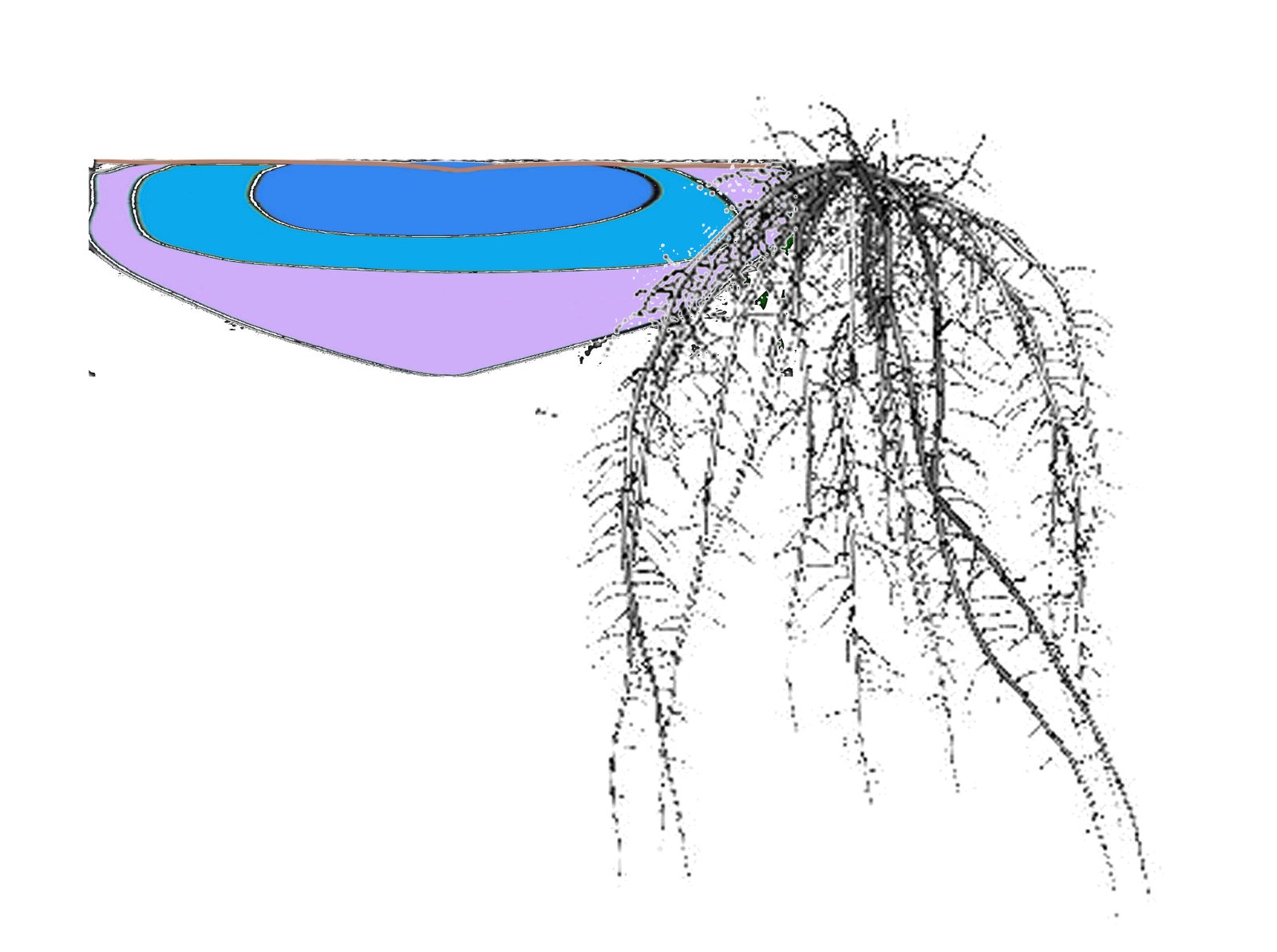
In High-Clay (e.g., Sandy Clay) soil, moisture spreads but doesn't penetrate well. You can imagine what happens to the deeper roots if irrigation runtime is less than 30 minutes! 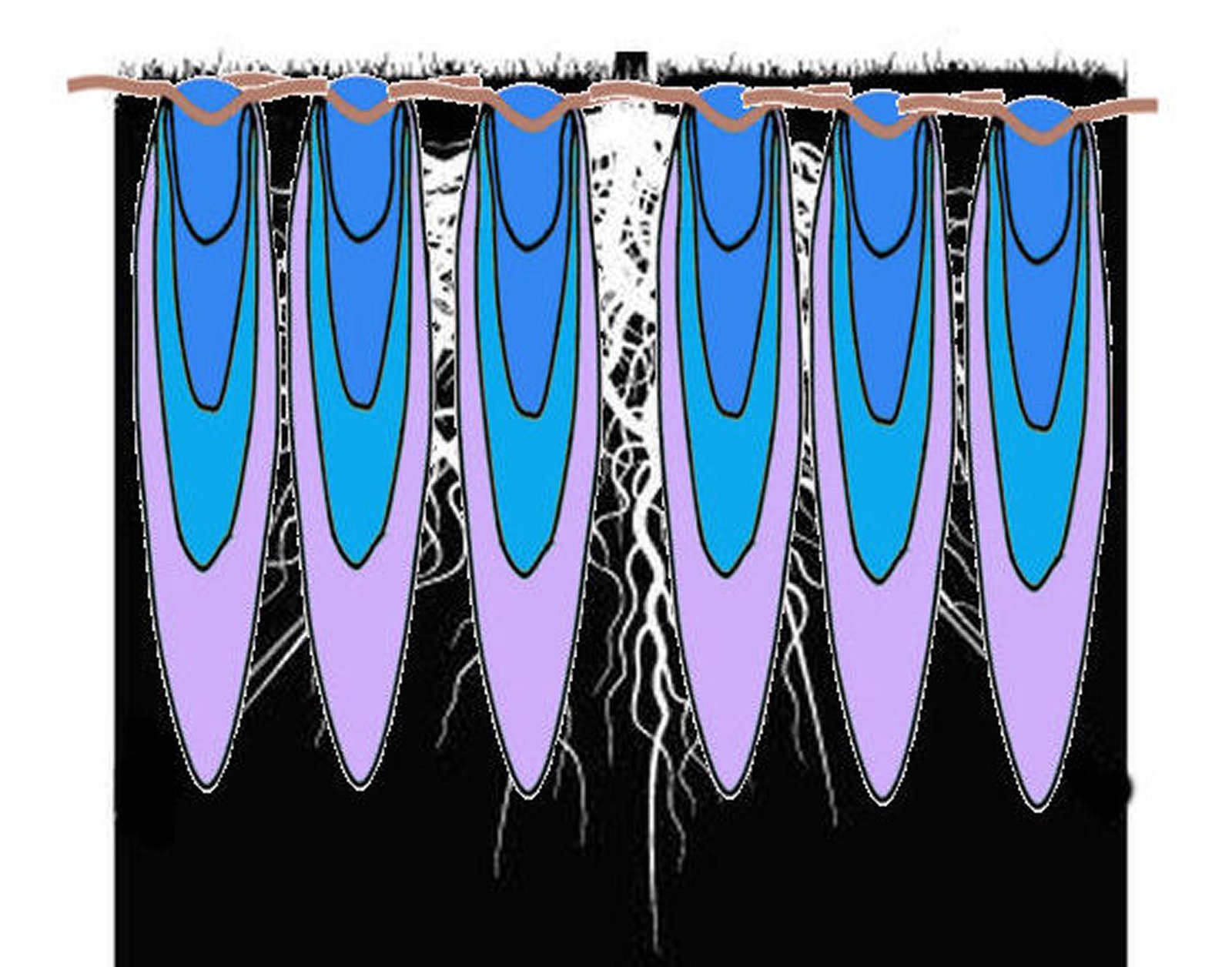
In a sandy soil, the water rapidly penetrates but does not spread. In this situation many more drips are required in order to obtain good moisture distribution |

|
A 1-gph (actual = 0.75) drip will generally radiate water 2 feet from center and 6 - 7
inches deep in typical clay-rich (sandy-clay-loam) slow draining soil with a runtime of
54 minutes. Each would cover about 1.5 sq. ft. A drought tolerant tree with a 10 ft.
diameter (canopy 78 sq. ft.) would require a root zone size of 39 sq ft (minimum).
This would be as many as 26 such drips in this type soil for that sized plant. This
puts out 18 gallons of water during that time. This results in good spread and depth
of adequate moisture.
Soil type is critical towards an accurate determination of drip count required. Too often we find 2 - 4 drips, placed near the trunk of this sized tree, and this is why we are called out to discover the reason the plant is not doing well. If you add plants around your newly exposed tree's root system, and provide enough watering time, the drips that water these, will also water your tree. |
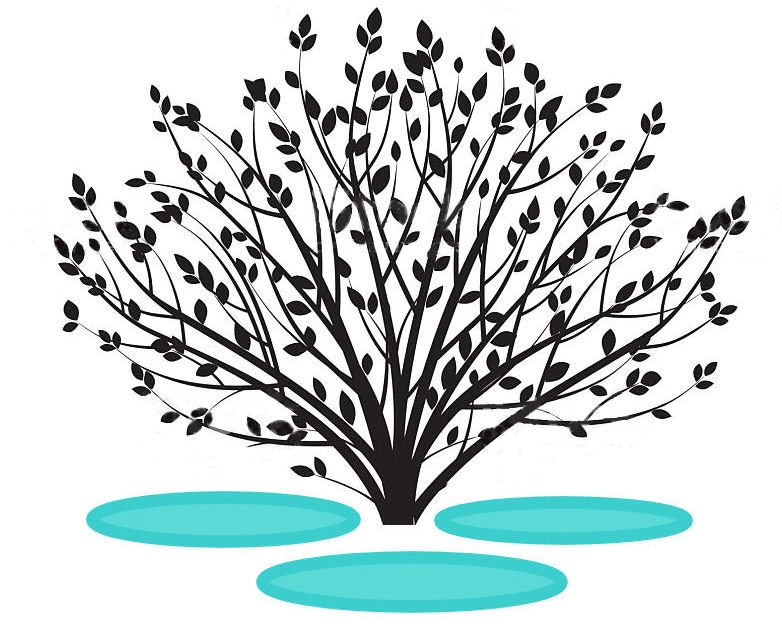
|
|
A 1-gph drip will generally radiate water 1.5 feet from center and 10 inches deep in
typical clay-sand soil if run for 30-45 minutes. Each would cover about 5 sq. ft.
A shrub with a 4 ft. diameter canopy (13 sq. ft.) would require as many as 2 to 3
drips in this type soil. Soil type is critical towards an accurate determination of
drip count required. In no case will 1 drip, placed on one side of the shrub be sufficient
to create and sustain an adequate and healthy root system.
|
DRIPPLERLINE OPTIONS What are some easy ways to spread the water around and do a better job of building a larger and healthier root system? |
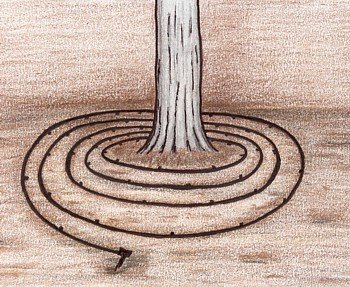
|
|
Here we see a "spiral" of Dripperline around the base of a tree. The location of each
emitter can be seen as a sort of bump in the line. In effect what is accomplished with a Dripperline spiral is a most simply way of assuring excellent distribution of irrigation moisture around nearly every shrub or tree. Each consecutive ring in the spiral should be approximately 6 to 12 inches from the ring inside. Smaller plants 6 inch - larger plants 12 inch. |
|
For really hard soil, the rings can be held by a plastic clamp and secured by nails;
from 2" 6d size to 5" 40d size, based on the hardness of the soil. Or, if the soil is
soft there are many types of stakes or anchors that will do the job nicely.
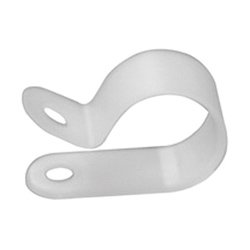
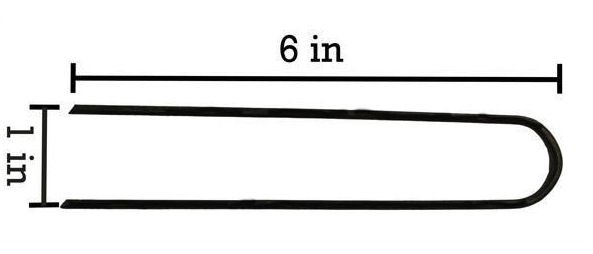
After finishing installation and testing the Dripperline, an attractive covering could be Shredded Cedar Mulch which also repels insects. |
|
Proper Irrigation Design Having a dead tree removed from your property is very costly. To assume that, because the new plant did well this year means it will continue to do so without updates to the irrigation system is asking for trouble. So, how can we make sure that the established tree will be able to survive and thrive in the years ahead? |
|
If you decide on drip, you'll need to determine how many emitters and where to place them.
Another option for trees in a Xeriscape is Netafim®, a soaker type tubing system,
could be placed under the landscape rock. Proper watering will develop deep roots
and makes the plants drought tolerant. The feeder roots of a plant are typically
within the top 10" of the soil, and extend to the "dripline"; An area directly below
the reach of its branches.
|
|
The Garden Galaxy Soil-Flow Pro-I (a free online tool) provides complete and accurate
irrigation lay-out and scheduling for the landscape area under improvement.
Including everything from identifying the soil composition to emitter-count and
run times, this on-line calculator that goes with you right to the job / plant site
will ask a few simple questions and provide many specific answers and recommendations.
The proportions of native and the various amendments are specified for each planting analyzed.
|